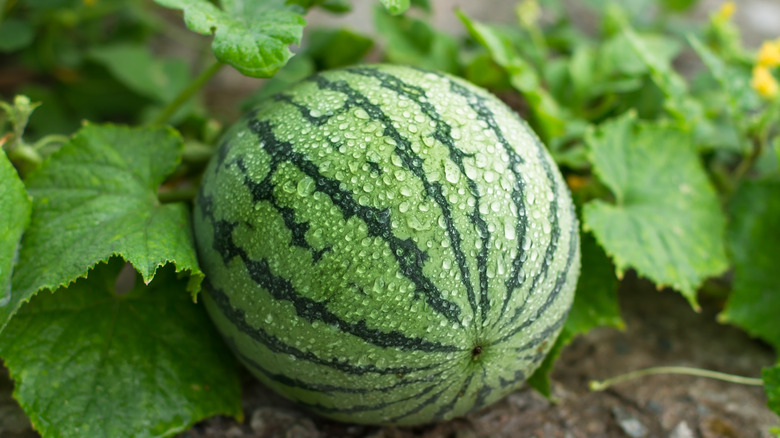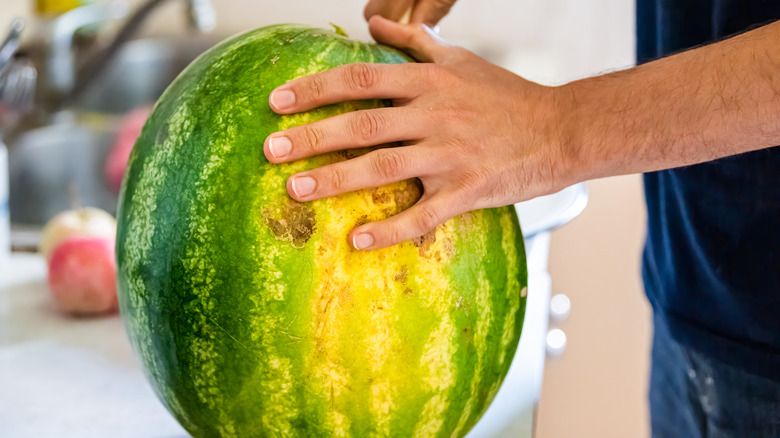What The Yellow Spot On A Watermelon Tells You
People do a whole lot of things to coax secrets out of a watermelon. From thumping to scratching, shaking, tapping, and slapping, folks are seeking just four morsels of the melon's intelligence: Is this watermelon ripe, juicy, sweet, and delicious? In other words, is it ripe? Considering a watermelon's sometimes-massive size, it's difficult to know what's snuggled up inside that thick-wasted outer rind. But farmers and in-the-know melon aficionados have plenty to say about that.
Known botanically as Citrullus lanatus, watermelons are part of the Cucurbitaceae family of flowering, vining plants (per MasterClass). They are the "big brothers" to cantaloupes as well as honeydew melons and have at least 300 cousin-varieties spread across the USA and South America. They're a healthy group by nature, imparting vitamins C, A, and B-5; minerals potassium and copper; the amino acid citrulline; and the antioxidant lycophene, per Healthline. The larger-than-life fruits take about 80 to 90 days to ripen in the main season, per Better Homes & Gardens, so it's important to decipher if they sat in the fields long enough to reach the perfect juicy sweetness. That's where the "yellow spot" discussion comes into play.
Is a watermelon's yellow spot the best way to tell if it's ripe?
Even if you have a predetermined method of choosing the best watermelon, put passion aside for a minute and hear from the experts at Watermelon.org. They champion a simple way of telling if a watermelon is ripe, which incorporates several tips into their "Look, Lift, Turn!" approach. Spoiler alert: it doesn't advocate the thumping method.
The first step is obvious, though sometimes overlooked: pick up that watermelon and eyeball it, searching for signs of damage such as indentions, bruising, and cuts that pierce the rind. Scratches are normal considering its journey from field to market.
The second "lift" step can be challenging considering a watermelon's weight (the heaviest one recorded by Guinness World Records in 2012 rolled from Tennessee into infamy at 350.5 pounds). Since a watermelon is 92% water, it should feel very heavy, indicating that it's still fresh and juicy, explains Healthline.
Finally, there's the "turn" step — and that's where you'll find the yellow spot. This is known as the field or ground spot; aptly named for its position directly on the ground, explains MasterClass. This is where the melon soaked up sun; ripening to full glory. The creamy- or buttery-colored yellow spot on the underside indicates that its fully ripened on the vine and ground for a sufficient amount of time before it was harvested. If the spot is white, it was picked too soon, sacrificing the juicy sweetness you crave.

